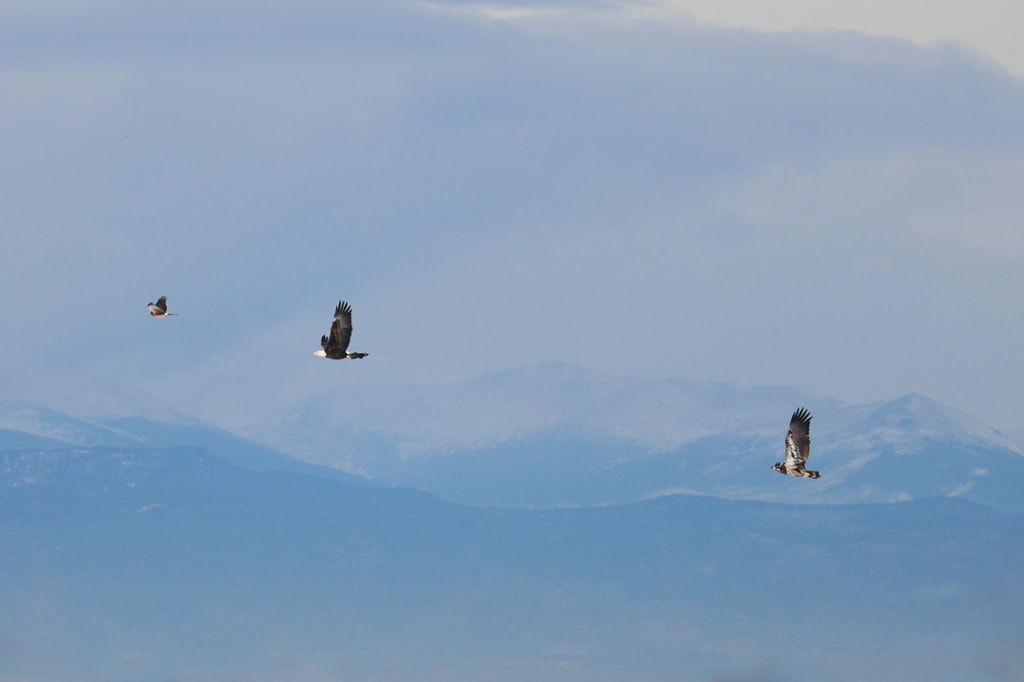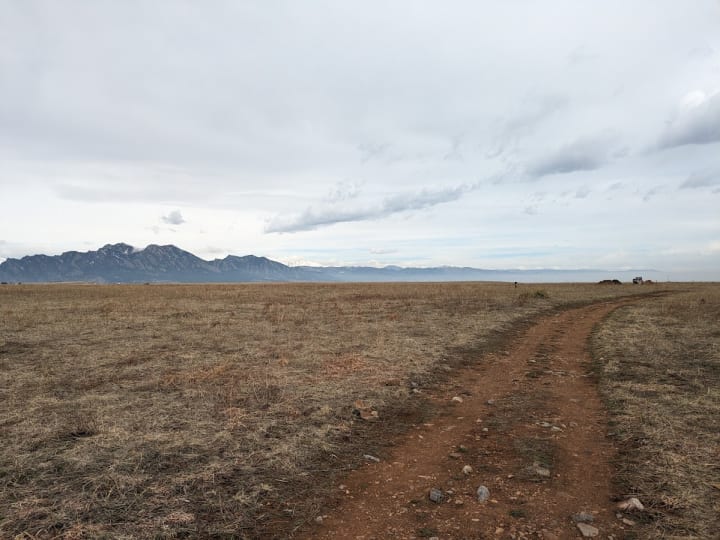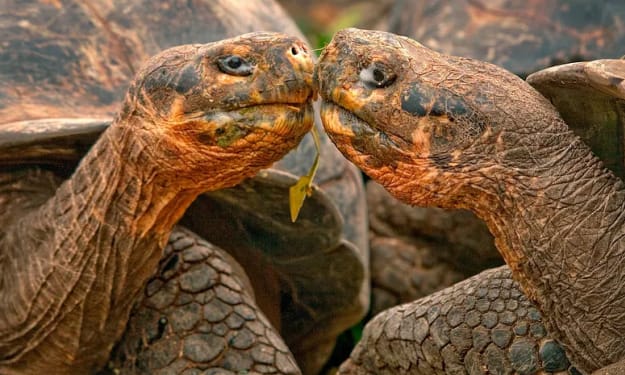Bird Conservation Efforts in the US
From the bald eagle to the California condor

Bird conservation in the United States has been a journey of dramatic highs and lows. Among the myriad avian species that call the U.S. home, two stand out as icons of conservation success and ongoing challenge: the bald eagle and the California condor. Let's dive into their stories, explore the efforts to protect them, and understand what their journeys tell us about bird conservation in America.
Bald Eagles: From the Edge of Extinction
The bald eagle, with its striking white head and tail contrasting against a dark brown body, is more than just a bird; it’s a symbol of American freedom and resilience, not to mention the symbol of the U.S. itself and its national bird. But there was a time not too long ago when this majestic bird was teetering on the edge of extinction.
In the mid-20th century, bald eagles faced a perfect storm of threats. Habitat destruction, hunting, and most devastatingly, the widespread use of the pesticide DDT, led to a catastrophic decline in their numbers. DDT, while effective at controlling pests, had a chilling side effect: it caused the thinning of eggshells. Eagles would lay eggs, only for them to break under the weight of the incubating parents. By the 1960s, the bald eagle population in the contiguous United States had plummeted to fewer than 500 nesting pairs.
Public awareness campaigns, legal protections, and the banning of DDT in 1972 under the Environmental Protection Agency (EPA) were pivotal steps in recovering the population of the bald eagle. The Endangered Species Act of 1973 provided further protection, making it illegal to harm bald eagles or disturb their nests.
Conservationists didn't stop at legislative measures. They engaged in active breeding programs and reintroduction efforts. Eagles were bred in captivity and then released into the wild, a strategy that helped bolster their numbers. By the mid-2000s, these efforts had paid off spectacularly. The bald eagle was removed from the Endangered Species List in 2007, with the population rebounding to around 10,000 pairs.
Even though bald eagles are no longer endangered, conservation efforts haven't ceased. Monitoring programs keep a close watch on populations to ensure they remain healthy. Efforts to preserve and restore habitats continue, as eagles require large territories with ample prey and tall trees for nesting. Public education campaigns help people understand how to coexist with these powerful birds, ensuring that they can thrive without human interference.
California Condors: A Battle Against Extinction
While the bald eagle story is one of triumphant recovery, the California condor's tale is a much more recent testament to the ongoing struggle against extinction. These birds, with their immense wingspans and distinctive bald heads, are among the rarest in North America, and their path to recovery has been fraught with challenges.
California condors once soared over much of North America, but by the mid-20th century, their population had plummeted due to habitat destruction, poaching, and lead poisoning from ingesting spent lead bullets or fragments of lead bullets. By 1982, there were only 22 individuals left in the wild. Faced with the imminent extinction of the species, a controversial decision was made to capture all remaining wild condors and initiate a captive breeding program.
The captive breeding program was a last-ditch effort, but it proved to be a lifeline. Biologists painstakingly worked to breed condors in captivity, utilizing innovative techniques such as puppet-rearing to ensure that chicks did not imprint on humans. These efforts began to bear fruit, and in 1991, the first captive-bred condors were released back into the wild.
The reintroduction efforts have expanded over the years, with condors being released in California, Arizona, Utah, and Baja California in Mexico. As of 2023, there are over 500 California Condors, with more than half of them flying free in the wild. This is a significant improvement, but the species remains critically endangered, and the fight for their survival is far from over.
Unfortunately, lead poisoning still remains one of the biggest threats facing California condors. Condors scavenge on animal carcasses, and if these animals were shot with lead ammunition, the condors ingest the toxic metal, which can be fatal. Efforts to mitigate this issue include promoting the use of non-lead ammunition among hunters and ongoing research into the effects of lead on wildlife.
Habitat conservation is also crucial. Condors need large, undisturbed areas with plenty of food resources. Conservationists work tirelessly to protect these habitats from development and environmental degradation. Moreover, biologists continue to monitor the health and movements of wild condors using GPS tracking and health checks, ensuring that any issues can be promptly addressed.
The Bigger Picture: Overall Goals of Bird Conservation in the US
The stories of the bald eagle and the California condor highlight the broader challenges and triumphs of bird conservation in the United States. While these two species have garnered significant attention, they are part of a much larger effort to protect America's avian diversity.
As mentioned with regards to both the bald eagle and the California condor, one of the fundamental aspects of bird conservation is habitat protection. Birds need places to live, breed, and find food. Efforts to conserve wetlands, forests, grasslands, and other critical habitats are essential. National Wildlife Refuges, state parks, and private conservation initiatives play vital roles in preserving these environments.

Strong environmental laws and policies are the backbone of bird conservation. The Endangered Species Act, the Migratory Bird Treaty Act, and various state-level protections provide legal frameworks to safeguard bird populations. These laws not only protect birds directly but also promote broader environmental health, benefiting entire ecosystems.
Bird conservation isn't just the domain of scientists and policymakers. Citizen science programs like the Audubon Society's Christmas Bird Count and the Cornell Lab of Ornithology's eBird platform engage thousands of volunteers in monitoring bird populations. These efforts provide invaluable data that helps guide conservation strategies.
Modern threats to birds include climate change, pollution, and collisions with man-made structures. Climate change is shifting habitats and altering migration patterns, making it a significant concern for bird conservationists. Pollution, from plastics to pesticides, continues to harm bird populations. Additionally, birds often collide with buildings, wind turbines, and other structures, leading to significant mortality rates.
Innovative solutions are being developed to address these challenges. Building designs are being modified to make windows more visible to birds, reducing collision risks. Renewable energy projects, such as wind farms, are being planned and managed to minimize impacts on bird populations.
The stories of the bald eagle and the California condor are powerful reminders of both the fragility of nature and the incredible resilience of wildlife. They show us that with concerted effort, collaboration, and a deep respect for nature, we can make a difference. Bird conservation in the United States is a shared responsibility, involving government agencies, conservation organizations, scientists, and everyday citizens.
As we move forward, it's essential to continue supporting conservation efforts, advocating for strong environmental policies, and engaging in practices that protect and preserve bird habitats. Whether it's participating in a local bird count, supporting legislation that protects wildlife, or simply being mindful of our impact on the environment, each action contributes to the larger goal of ensuring that America's birds continue to thrive for generations to come.
About the Creator
Erica J.
Chronic-pain sufferer just trying to be healthy and enjoy life while bird lurking and photographing nature. Purchase photo prints, read birding blogs, or see hiking videos: https://linktr.ee/erica80hd
Enjoyed the story? Support the Creator.
Subscribe for free to receive all their stories in your feed. You could also pledge your support or give them a one-off tip, letting them know you appreciate their work.
Reader insights
Nice work
Very well written. Keep up the good work!
Top insight
Easy to read and follow
Well-structured & engaging content






Comments
There are no comments for this story
Be the first to respond and start the conversation.